The Atlas Hotel is Vo Trong Nghia Architects’ thoughtful response to the increasing commercialisation of the Vietnamese town of Hoi An. This restive respite nestles comfortably into a dense urban grid and stirs consciousness of our relationship with nature.
December 14th, 2017
The site of the Atlas Hotel in the historic town of Hoi An, Vietnam, is unusually awkward in shape. The site plan recalls spreading interstitial fingers that fit snugly into the fine-grained urban fabric. Vo Trong Nghia and his team employed this to their advantage by developing a fractal Y-shaped scheme that creates interesting intersections within a network of courtyards. The creation of courtyards was a nod to the urban context – to the quaint alleyways and shaded courtyards of the shophouse vernacular in Hoi An. The architects observed that since its christening as a UNESCO World Heritage Site, Hoi An has been beset with the common challenges of a rapid growth in tourism and commercialisation. As a result, the old town has been losing the charms of its once calming pace of life. The studio’s design proposal for the Atlas Hotel was, in essence, an attempt to counter the chaos of commercial flow with a more restive space.
The five-storey hotel building features 48 guest rooms organised into four volumes that are lifted off the ground plane by bare concrete columns. By freeing up the ground floor from enclosures and designing the common areas such as the reception, restaurant and a café as informal, breezy spaces, the architects were able to create a series of interconnecting routes and verdant courtyards. To navigate the complexity of the site and the required setbacks, the overall plan was restricted to linear volumes. This means that the guest rooms are shallower in depth than typical hotel rooms. Instead of being hampered by these restrictions, the architects saw them as an opportunity for each bedroom and bathroom to enjoy more immediate access to lush greenery.
Verdant planting spills out from façade planters in juxtaposition with the layers of local sandstone blocks, rhythmically interrupted by exposed concrete slabs. As they are a prominent feature on the façade, the detailing of the concrete planters had to be carefully considered so they would not pose maintenance issues. For instance, all the planter boxes were designed as pop-out protrusions from the façade to avoid issues of leakage along the slabs. The natural façade materials were also exposed instead of being painted to do away with the need to repaint every few years.
Light filters softly through the porous façade of stacked blocks and lush planting. Foliage shadows dance as one walks along the corridors, which are pleasantly cool due to natural ventilation through the shading greens. There is a sense of quietude as well as raw tactility that feels natural and disarming. Crafting this atmosphere of intimacy with nature lies at the heart of Vo’s aspiration for the Atlas Hotel. “At its core,” he shares, “the Atlas Hotel reconnects [people] with nature.”
Personally, Vo shares that he practices meditation as a way of growing in mindfulness, and advocates the practice to his colleagues as well. “Actually, meditation can help people connect with nature faster. That’s why meditation is very important in our office,” Director Tran Thi Hang notes. Certainly, there is a way of thinking about architecture, and fundamentally, about a way of life, that infuses Vo’s work.
Take a look at Vo Trong Nghia Architect’s Wind and Water Bar.
INDESIGN is on instagram
Follow @indesignlive
A searchable and comprehensive guide for specifying leading products and their suppliers
Keep up to date with the latest and greatest from our industry BFF's!
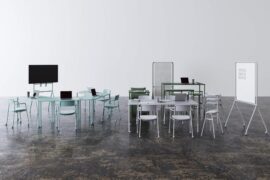
Welcomed to the Australian design scene in 2024, Kokuyo is set to redefine collaboration, bringing its unique blend of colour and function to individuals and corporations, designed to be used Any Way!

A longstanding partnership turns a historic city into a hub for emerging talent

London-based design duo Raw Edges have joined forces with Established & Sons and Tongue & Groove to introduce Wall to Wall – a hand-stained, “living collection” that transforms parquet flooring into a canvas of colour, pattern, and possibility.
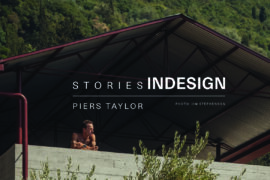
Piers Taylor joins Timothy Alouani-Roby at The Commons to discuss overlaps with Glenn Murcutt and Francis Kéré, his renowned ‘Studio in the Woods,’ and the sheer desire to make things with whatever might be at hand.
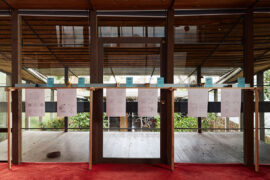
A recent exhibition at the Robin Boyd Foundation in Melbourne invited visitors to think deeply about sheds and what this under-appreciated building typology can teach us about construction and living today.
The internet never sleeps! Here's the stuff you might have missed
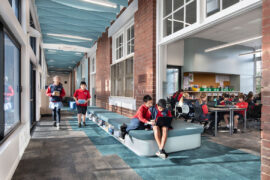
At Moonee Ponds Primary School, Clarke Hopkins Clarke’s transformative design uses Autex acoustic solutions to shape a calm and creatively charged learning environment.
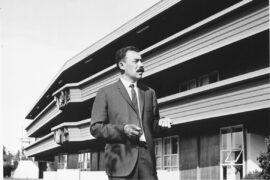
A retrospective at Canberra Museum + Gallery honours Enrico Taglietti, shaping the exhibition through his own design principles.
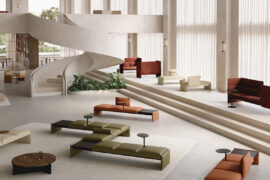
Where style and substance truly dwell, Gardam’s latest modular collection – available through Stylecraft – balances elegance and versatility.
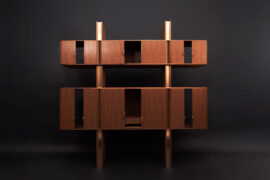
Adam Markowitz Design, in collaboration with Simeon Dux, has been awarded The Object at the INDE.Awards 2025. Their winning project, A Cabinet of Curiosities, is a masterwork of craftsmanship and adaptability; a poetic response to shifting domestic and professional life in the post-COVID era.